Economy Employment

What is the relationship between economic recovery and employment rates ?
The relationship between economic recovery and employment rates is influenced by various factors such as increased aggregate demand, investment in the economy, government policies, and global factors. As the economy recovers, businesses start hiring more workers to meet the growing demand for goods and services, leading to an increase in employment rates. However, this relationship is complex and requires a deeper understanding of the different aspects involved.

What impact do circular economy policies have on employment opportunities ?
Circular economy policies can have a significant impact on employment opportunities across various sectors, with both positive and negative effects. Job creation in recycling and waste management, growth in green technologies, support for small businesses and startups, and education and training programs are some of the positive impacts. However, displacement of workers in traditional industries, skill gaps and reskilling challenges, and economic disruption and market uncertainty are some of the negative impacts. Policymakers should consider both the positive and negative impacts when designing and implementing circular economy strategies to ensure that overall employment opportunities are maximized while still achieving environmental goals.
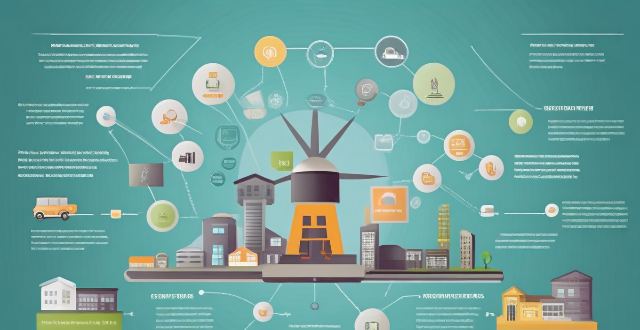
What impact does energy transition have on employment and job creation ?
The energy transition from fossil fuels to renewable sources significantly impacts job creation and employment. This shift brings growth in renewable energy sectors, green economy expansion, research & development, infrastructure development, and energy efficiency services. However, it also causes employment shifts such as a decline in fossil fuel industries, skill transition, geographical impact, supply chain effects, and policy-driven changes. Managing these challenges through strategies like reskilling programs and supportive policies is crucial for a just and equitable energy future.

How might a lunar base influence the global economy and job market ?
The establishment of a lunar base could significantly impact the global economy and job market by increasing investment in space technology, creating new industries, driving innovation, and fostering international collaboration. It could also create numerous job opportunities and expand educational opportunities focused on space-related disciplines.
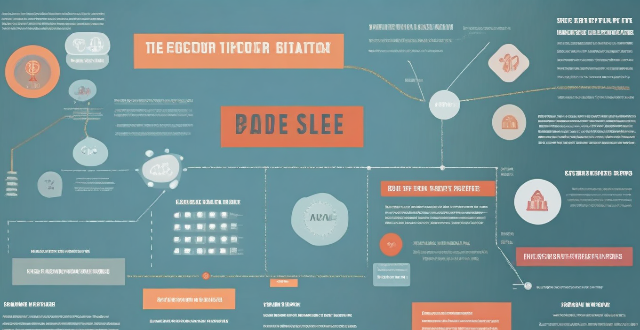
How long does it typically take for an economy to recover from a recession ?
Recovering from a recession is a complex process that can take several months to multiple years, depending on various factors. The initial phase involves emergency measures to stabilize the economy, followed by stabilization and early recovery phases where economic growth resumes. In the late recovery phase, the economy approaches its pre-recession trend growth rate, and in the post-recovery phase, it fully returns to its long-term growth trajectory. The actual timeline can differ significantly based on specific circumstances, but historical data suggests that past recoveries often took around 3-5 years.
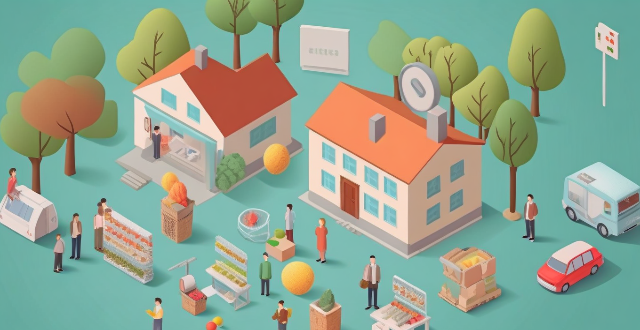
What is the correlation between housing market indicators and the overall economy ?
The housing market is a significant indicator of the overall health of an economy, intertwined with employment, consumer spending, and financial markets. Housing starts and permits signal economic growth; existing home sales reflect consumer confidence; home price indexes affect household wealth and consumer spending; mortgage rates influence home purchases; inventory levels indicate market strength or challenges; builder confidence suggests future construction trends; foreclosure rates reveal economic distress; and rental market trends show limited purchasing options. These indicators provide insight into different facets of the economy, painting a comprehensive picture of the housing market's health and its relationship with the overall economic condition.

What role do environmental organizations play in promoting climate-friendly employment ?
Environmental organizations are crucial in promoting climate-friendly employment through various roles including advocacy and policy influence, education and training, research and data collection, direct action and intervention, and collaboration and partnership building. They lobby for green policies, promote corporate responsibility, collaborate internationally, raise public awareness, offer skill development programs, partner with educational institutions, analyze employment trends, study economic impact, document success stories, fund sustainable projects, work with local communities, build NGO capacity, organize networking events, partner with government agencies, and form alliances with businesses. These efforts help create a more sustainable future while ensuring job security and economic prosperity for communities around the world.

How does self-employment affect my personal income tax calculation ?
Self-employment affects personal income tax calculation by requiring net income reporting, quarterly estimated tax payments, utilizing deductions and credits, filing specialized forms, and paying self-employment tax. Staying organized and informed about tax laws is crucial for effective tax management.

How do fuel vehicles affect the economy, particularly in terms of employment in the oil industry ?
The text discusses the impact of fuel vehicles on employment in the oil industry. It highlights that the industry offers a range of jobs from exploration and extraction to refining, distribution, and sales. However, it also notes challenges such as market volatility, environmental concerns, and technological advances that could affect job stability in the sector. The text concludes by emphasizing the need for strategies that promote economic stability while encouraging sustainable practices and innovation.

What is the impact of climate change on agricultural employment ?
Impact of Climate Change on Agricultural Employment: - Reduced Crop Yields due to droughts, floods, and loss of biodiversity can lead to job losses. - Changes in Cropping Patterns, such as shifting to new crops or shortened planting seasons, may require different skillsets and reduce employment opportunities. - Increased Pest and Disease Pressure can result in more labor for monitoring and management but also potential job losses from crop failures. - Infrastructure Damage and Displacement caused by extreme weather events can affect farming operations and employment levels. - Adaptation and Resilience Efforts, including developing resilient crop varieties and adopting sustainable farming practices, can create new job opportunities.

How do extreme weather events caused by climate change affect employment rates ?
This article explores the impact of extreme weather events caused by climate change on employment rates in various sectors, including agriculture, construction, and tourism. It highlights the vulnerability of these sectors to extreme weather events such as droughts, floods, heatwaves, hurricanes, tornadoes, wildfires, storms, rising sea levels, and reduced snowfall. The article also discusses potential mitigation strategies that can help reduce the impact of these events on employment rates in the affected sectors.
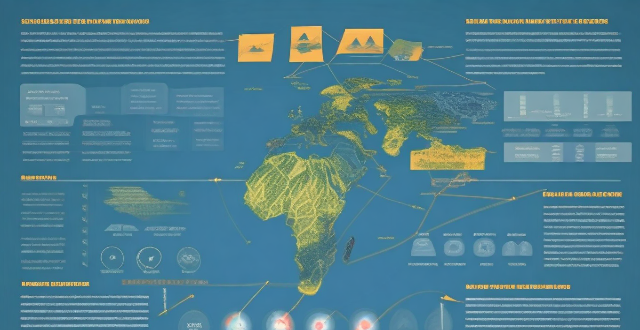
How does climate change influence the future of remote work and virtual employment ?
The article discusses the impact of climate change on the future of remote work and virtual employment. It states that rising temperatures, extreme weather events, and environmental concerns are driving factors for the shift towards remote work arrangements. As a result, there is an increasing demand for remote work options, technology advancements to support virtual employment, and a changing work culture that focuses on results rather than physical presence. The article concludes that embracing these changes can lead to a sustainable and efficient future of work.

How does a circular economy differ from a linear economy ?
The circular and linear economies are distinct models with different approaches to resource use, waste management, and sustainability. The linear economy follows a one-way flow of materials, extracting resources, processing them, consuming, and discarding as waste, focusing on continuous growth through increased consumption. In contrast, the circular economy aims to minimize waste and pollution by keeping resources in use for as long as possible through recycling, reusing, and regenerating products and materials. It focuses on creating a restorative and regenerative system by design. Key differences include the flow of resources, where the linear economy moves resources in a straight line from extraction to disposal, while the circular economy keeps resources in loops through recycling and regeneration. Economic growth is tied to increased consumption and throughput of resources in a linear economy, whereas it is decoupled from finite resources in a circular economy, emphasizing quality, longevity, and efficiency. Environmental impact is high in a linear economy due to excessive resource extraction, energy use, and waste accumulation, leading to pollution, habitat destruction, and climate change. In contrast, the circular economy has a lower environmental impact because it reduces waste and pollution by extending the life cycle of products and materials. Job creation and innovation are also different, with the linear economy centering jobs around resource extraction and processing, while the circular economy encourages job creation in recycling, refurbishing, and designing for longevity and recyclability. Transitioning from a linear to a circular economy presents challenges such as changing consumer behavior, investing in new technologies, redesigning supply chains, and updating legislation to support circular practices. However, it also offers opportunities such as reducing dependence on finite resources, stimulating green jobs and innovation, improving environmental quality, and fostering resilience against resource price volatility. Overall, the circular economy offers a pathway towards a more sustainable and resilient future for our planet.
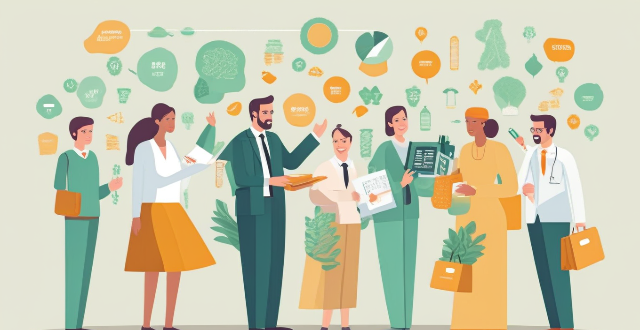
Which economic indicators are used to measure the health of the labor market ?
The health of the labor market is crucial for any economy, and several economic indicators are used to measure it. These include the unemployment rate, employment growth, labor force participation rate, wage growth, and job openings and vacancies. The unemployment rate measures the percentage of the labor force that is unemployed but actively seeking work, while employment growth refers to the number of new jobs created over a specific period. The labor force participation rate measures the percentage of working-age individuals who are either employed or actively seeking employment, and wage growth reflects the earning power of workers. Job openings and vacancies provide insight into the demand for labor within the economy. By monitoring these indicators regularly, stakeholders can identify trends and potential issues early on, allowing them to take proactive steps to address any challenges and promote a healthy labor market.

How will automation affect employment in the coming years ?
Automation is expected to have a significant impact on employment in the coming years, with potential job displacement and income inequality challenges. However, it also presents opportunities for job creation and a shift towards more creative and analytical roles. Skills such as creativity, critical thinking, and emotional intelligence will become increasingly valuable, while continuous learning and adaptability will be crucial for workers to stay relevant. Policy interventions are necessary to mitigate inequality and support an adaptable and resilient workforce.
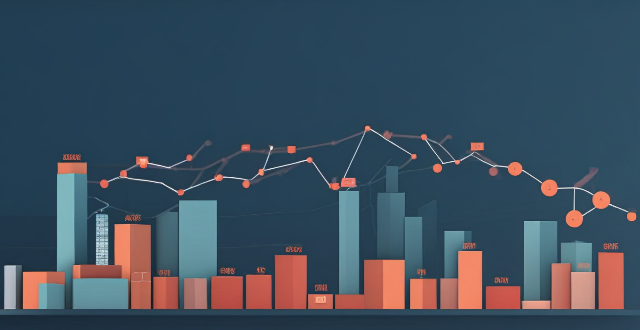
How do economic indicators influence currency exchange rates ?
Economic indicators significantly influence currency exchange rates by reflecting the health and performance of an economy, affecting demand for its currency. Key indicators include Gross Domestic Product (GDP), interest rates, inflation rates, trade balance, political stability, employment data, and consumer confidence. A strong economy typically leads to an appreciation of its currency, while a weaker economy can result in depreciation. These indicators are closely monitored by investors and traders to make informed decisions about buying or selling currencies.
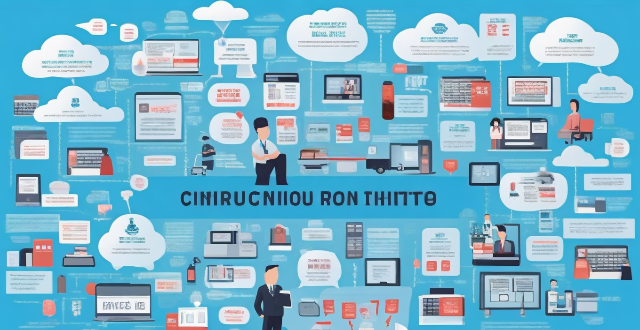
What challenges do countries face in implementing circular economy policies ?
Implementing circular economy policies is a complex process that countries face numerous challenges. These include lack of awareness and understanding, economic and industrial structure, legal and regulatory framework, market conditions and business practices, as well as social and cultural factors. Addressing these challenges is crucial for the successful implementation of circular economy policies, which can bring significant environmental and socioeconomic benefits.
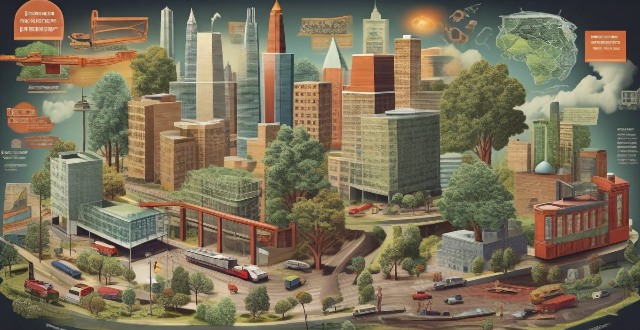
What are some successful examples of circular economy policies ?
The circular economy is a sustainable economic model that aims to minimize waste and pollution by keeping resources in use for as long as possible. Successful examples of circular economy policies include the European Union's Circular Economy Package, Netherlands' National Circular Economy Programme, China's Circular Economy Promotion Law, Japan's Sound Material-Cycle Society Act, and state-level initiatives in the United States. These policies focus on waste reduction, resource efficiency, extended producer responsibility, product stewardship, and public-private partnerships to promote a more sustainable future.

How can we create a sustainable economy that benefits both people and the planet ?
To create a sustainable economy that benefits both people and the planet, several strategies must be employed. These include shifting to renewable energy sources, promoting circular economy practices, encouraging green innovations and technology, implementing sustainable agriculture practices, supporting local economies and fair trade, and raising awareness and education about sustainability. By taking these steps, we can ensure the well-being of current and future generations while minimizing waste, reducing environmental impacts, and conserving natural resources.

How does a circular economy contribute to waste reduction and resource conservation ?
The circular economy model promotes waste reduction and resource conservation by advocating for the reuse and recycling of materials, reducing raw material extraction, extending product lifecycles, treating waste as a resource, encouraging the sharing economy and digital services, improving resource efficiency, promoting biodegradable and renewable resources, raising consumer awareness, and supporting regulatory policies. This approach challenges traditional linear economic models and offers a sustainable solution to address environmental issues related to waste and resource depletion.

What is the Consumer Confidence Index and how does it impact the economy ?
The Consumer Confidence Index (CCI) is a measure of consumer sentiment about the economy. It impacts the economy by serving as an indicator of economic health, influencing spending habits, affecting policy decisions, guiding business strategies, and causing market reactions. Overall, the CCI helps stakeholders make informed decisions based on consumer confidence levels.

How can circular economy policies contribute to economic growth ?
Circular economy policies can drive economic growth through innovation, job creation, and sustainable business models. By promoting resource efficiency, new markets, and sustainable supply chains, these policies reduce waste management costs and enhance corporate image. Government incentives further support businesses in adopting circular practices, mitigating risks from resource shortages and commodity volatility. Ultimately, the circular economy contributes to long-term economic stability by fostering renewable resource use and reducing waste.

What role do consumers play in promoting a circular economy ?
The text discusses the crucial role of consumers in promoting a circular economy, which is an economic system aimed at reducing waste and maximizing the use of resources. Consumers can contribute to this process by reducing their consumption, reusing and recycling products, and supporting sustainable brands. By making conscious choices and taking actions towards sustainability, consumers can help create a more efficient and eco-friendly economic system.

How can circular economy policies be applied to different industries ?
The circular economy is a concept aimed at reducing waste and maximizing resource use across various industries. Here are key ways to apply circular economy policies in different sectors: 1. **Manufacturing**: Implement resource efficiency, remanufacturing, design for disassembly, and sustainable supply chain management. 2. **Agriculture**: Adopt crop rotation, composting, precision farming, and aquaponics systems. 3. **Energy**: Utilize renewable energy sources, improve energy efficiency, implement waste-to-energy solutions, and develop smart grids. 4. **Fashion**: Use sustainable materials, promote rental and secondhand markets, establish closed-loop production, and ensure transparency and traceability. 5. **Food and Beverage**: Reduce food waste, minimize packaging, upcycle byproducts, and conserve water. 6. **Construction**: Employ modular design, use green building materials, incorporate energy-efficient designs, and plan for deconstruction.

How does global shopping contribute to economy ?
Global shopping, or cross-border e-commerce, has become a crucial aspect of the global economy. It involves buying and selling goods and services across national borders through online platforms. This phenomenon has not only revolutionized shopping but also significantly contributed to economic growth worldwide. Here are some ways global shopping boosts the global economy: 1. Increased consumer spending: Global shopping provides consumers with access to a wide range of products from around the world, leading to higher consumer spending, which is a key driver of economic growth. 2. Benefits for sellers: Businesses can reach new customers and expand their market share by tapping into international markets, increasing revenue and profitability. 3. Job creation and employment opportunities: The rise of global shopping has given birth to numerous jobs in various sectors such as logistics, customer service, marketing, and technology. 4. Boosting local economies: Local businesses can reach customers beyond their geographical boundaries by exporting their products globally, generating revenue that helps sustain their operations and contribute to the local economy. 5. Encouraging innovation and competition: The global marketplace created by cross-border e-commerce encourages businesses to innovate and improve their products to stay competitive, benefiting consumers by providing them with high-quality products at competitive prices. 6. Fostering international trade relations: Global shopping promotes cooperation between nations by facilitating trade agreements and reducing barriers to entry for businesses looking to expand internationally.
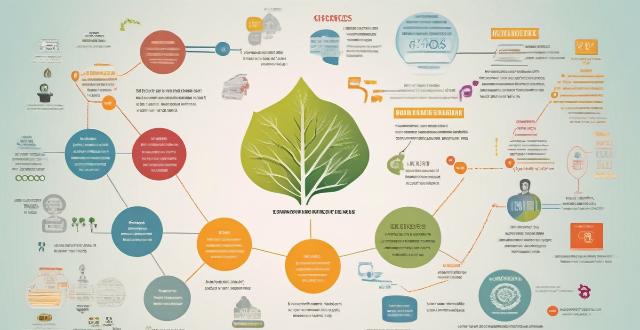
Why is the concept of a circular economy important for sustainable development ?
The circular economy, an economic system that minimizes waste and maximizes resource use, is crucial for sustainable development. It helps reduce resource depletion, waste, and pollution, while providing economic benefits, fostering innovation, and promoting social equity. By transitioning to a circular economy, we can ensure long-term sustainability and preserve resources for future generations.

Can you provide some examples of successful circular economy models ?
The circular economy is a regenerative system that aims to keep resources in use for as long as possible, extracting the maximum value from them while incurring the least waste. Some examples of successful circular economy models include: 1. Reuse and recycling programs such as IKEA's furniture recycling program and Patagonia's Worn Wear program. 2. The sharing economy, where underutilized assets are shared among people, such as Airbnb and Zipcar. 3. Product as a Service (PaaS), where companies like Xerox and Philips offer their products as a service rather than selling them outright. 4. Industrial symbiosis, where industries work together to create a sustainable ecosystem by exchanging waste materials and resources, such as Kalundborg Symbiosis and Chalmers Hamn. These models demonstrate how businesses can operate sustainably by designing out waste and pollution, keeping products and materials in use, and regenerating natural systems.

In what ways can technology support the growth of a circular economy ?
Technology plays a crucial role in supporting the growth of a circular economy by enabling efficient use of resources, reducing waste, and promoting sustainable practices. It can improve resource management, reduce waste through recycling technologies and 3D printing, promote sustainable practices with carbon footprint calculators and green software, support circular business models like sharing economy platforms and product as a service models, and raise awareness about sustainable practices through online courses and social media campaigns.

What is the impact of private equity on the economy ?
The article discusses the impact of private equity (PE) on the economy, highlighting both its positive and negative aspects. On the positive side, PE firms can stimulate job creation by investing in underperforming companies and contributing to overall economic growth. They also bring operational expertise and financial management skills to improve efficiency and competitiveness in businesses. Additionally, PE firms can drive innovation and technology advancement by investing in research and development activities and supporting startups. However, there are negative impacts as well. PE firms often prioritize short-term gains over long-term sustainability, leading to cost-cutting measures that harm employee morale or reduce product/service quality. They may also load companies with high debt levels, increasing financial risks and potentially leading to bankruptcy. Asset stripping is another concern where PE firms sell off valuable assets for quick profits, leaving businesses weakened and less competitive. Furthermore, PE activity can contribute to increased inequality issues within an economy by concentrating wealth among a small group of investors while neglecting smaller businesses and startups struggling for funding. In conclusion, policymakers must carefully consider the potential consequences of PE activity when designing regulations aimed at promoting sustainable economic growth and protecting stakeholder interests.

How will the rise of automation and artificial intelligence affect employment opportunities in future cities ?
The rise of automation and artificial intelligence (AI) is expected to have a significant impact on employment opportunities in future cities. This transition will likely result in decreased demand for certain jobs, particularly those involving repetitive tasks or moderate skills, while increasing the need for specialized skills in areas like software development and data analysis. To adapt to these changes, strategies such as lifelong learning, job retraining programs, and collaboration between businesses and educational institutions are recommended. It is crucial for individuals, governments, and businesses to proactively prepare for these shifts to ensure a diverse and resilient workforce.